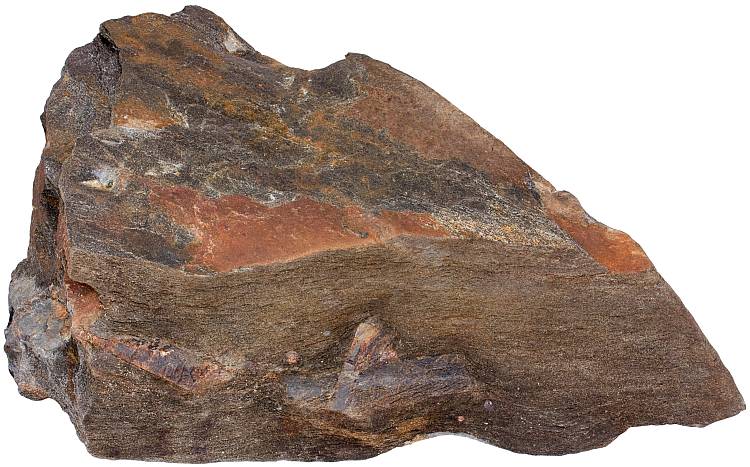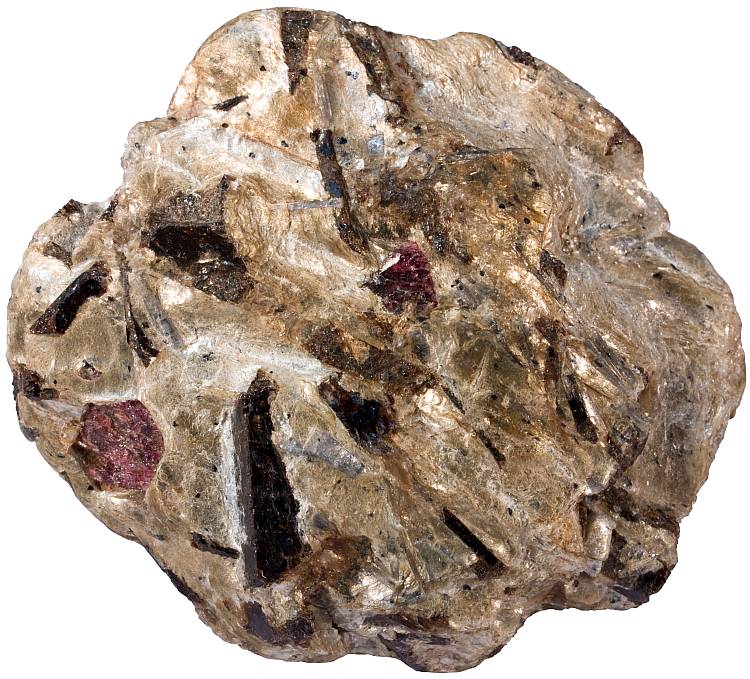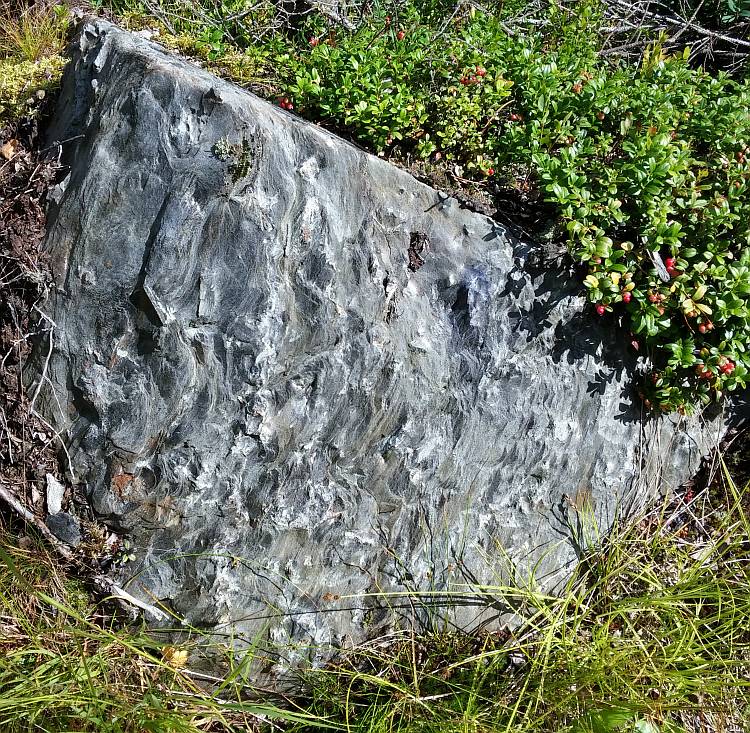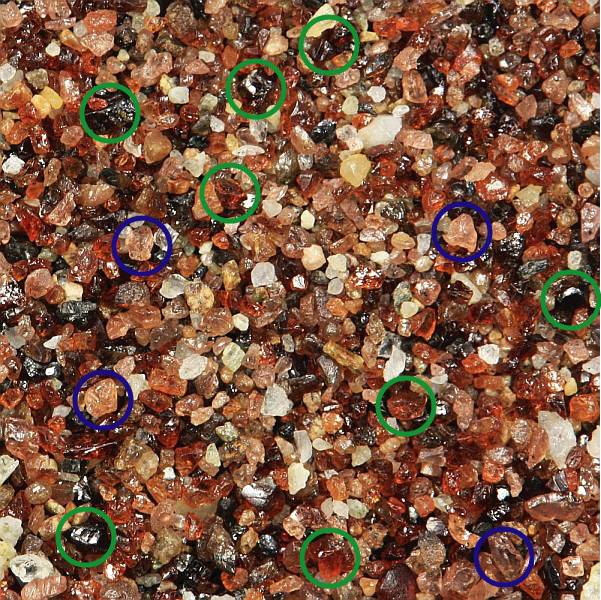Staurolite is a common mineral in medium-grade aluminous metamorphic rocks. The composition is very rich in aluminum: Fe2Al9O6[(Si,Al)O4]4(OH)2. This indicates that the protolith had to be a clay-rich sedimentary rock. It is a hydrous mineral which makes it unstable at very high pressures.

Schist with a large twinned staurolite porphyroblast. Tohmajärvi, Finland. Width of sample 19 cm.
Staurolite is an orthosilicate: ratio of (Si,Al):O is 1:4 and the silica tetrahedra are isolated from each other. Structurally similar silicate minerals are kyanite and garnet which tend to occur often together with staurolite as they are all Al-rich minerals formed during metamorphism. Other common metamorphic minerals that often occur with them are kyanite, muscovite, biotite, chloritoid, and cordierite.
Crystals are elongated and dark brown. Edges of crystals may be lighter and even orange in color if the light is able to penetrate the crystal. Twinning is very common (crystals crossed with 90 or 60 degree angles between them) which are very characteristic and therefore useful in identification.

Dark, elongated staur. crystal in a metamorphic rock schist with garnet, kyanite and muscovite. Width of sample 7 cm.

Outcrop of staurolite schist. Tohmajärvi, Finland.
This mineral is resistant to weathering and is therefore very common constituent in sand. It is part of the heavy mineral fraction, its density is 3.7…3.8 g/cm3. It may be easily mistaken for garnet because small grains are often not elongated and they are signifiantly lighter in color than large crystals in rocks. Staurolite as a sand grain is orange, garnet is usually pink (spessartine (Mn-rich garnet) may resemble staurolite in color, though). Polarizing microscope may be helpful to tell them apart. Garnet is an isometric mineral which will be dark in crossed polars while staurolite has interference colors.

Blue circles mark garnet and green circles staur. grains. Sand sample is from the Mediterranean Coast of France (Rayol-Canadel-sur-Mer). Other grains are quartz, K-feldspar, and plagioclase. Width of view 10 mm.
Staurolite is mostly used as an abrasive (hardness 7-7.5) in sandblasting applications. So in this regard it is also very similar to garnet. Twinned crystals have a commercial value as they resemble crosses which can be used as earrings or pendants.
I was curious as to what a crossed twin looked like, so I Googled “staurolite crossed twin”. I found a nice example on a website selling crystals for healing: http://www.satyacenter.com/store/crystal/staurolite/4672
Seems staurolite can be used to “ground an individual with a tendency to “float away” from the material world, or to be lost in abstract realms of mental ratiocination” … but is this a problem?!! 🙂
This is a terrific piece of knowledge. I will use it next time when I feel I am floating away or getting lost in abstract realms of mental ratiocination. I have to admit that I often have problems with it. 🙂